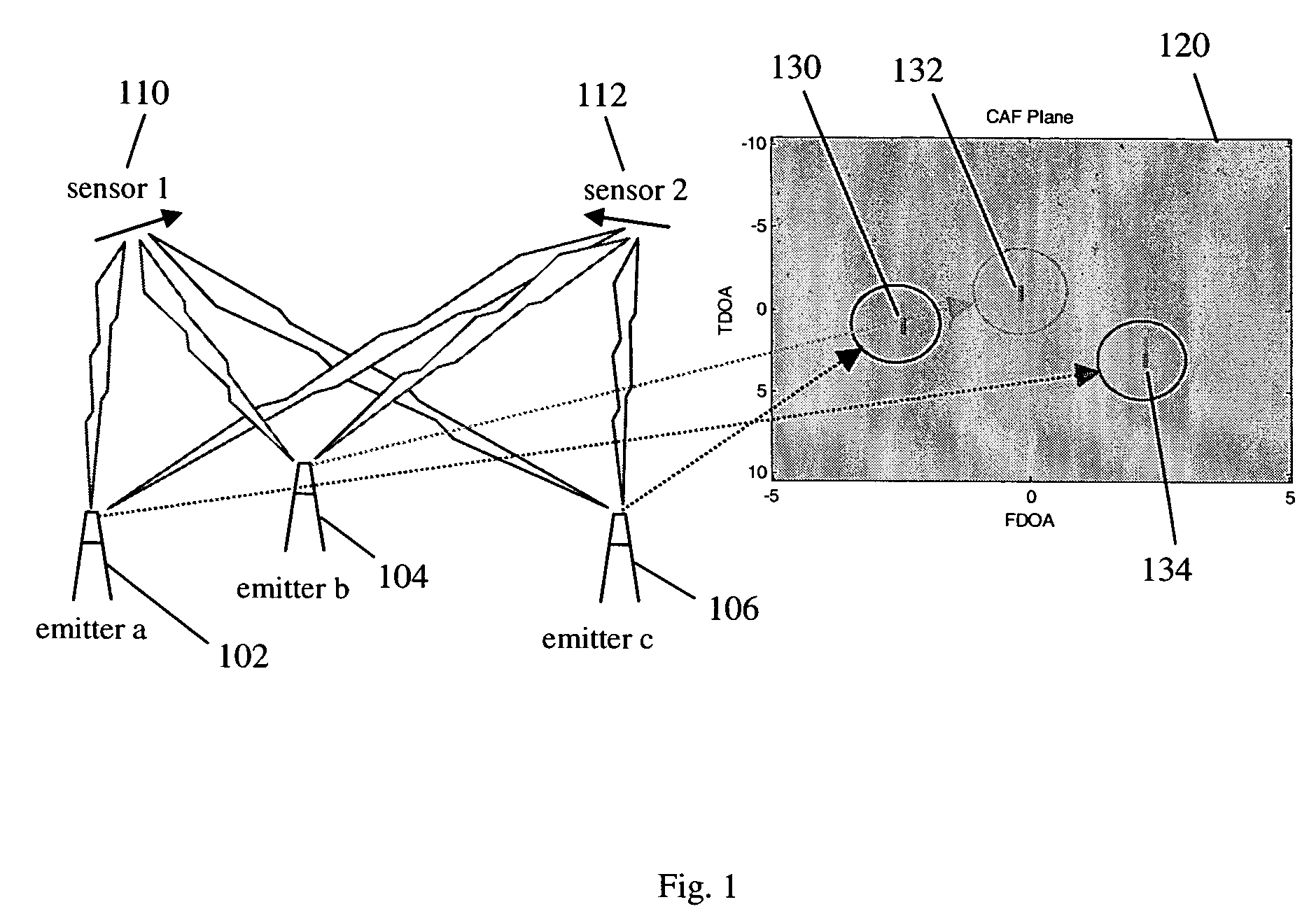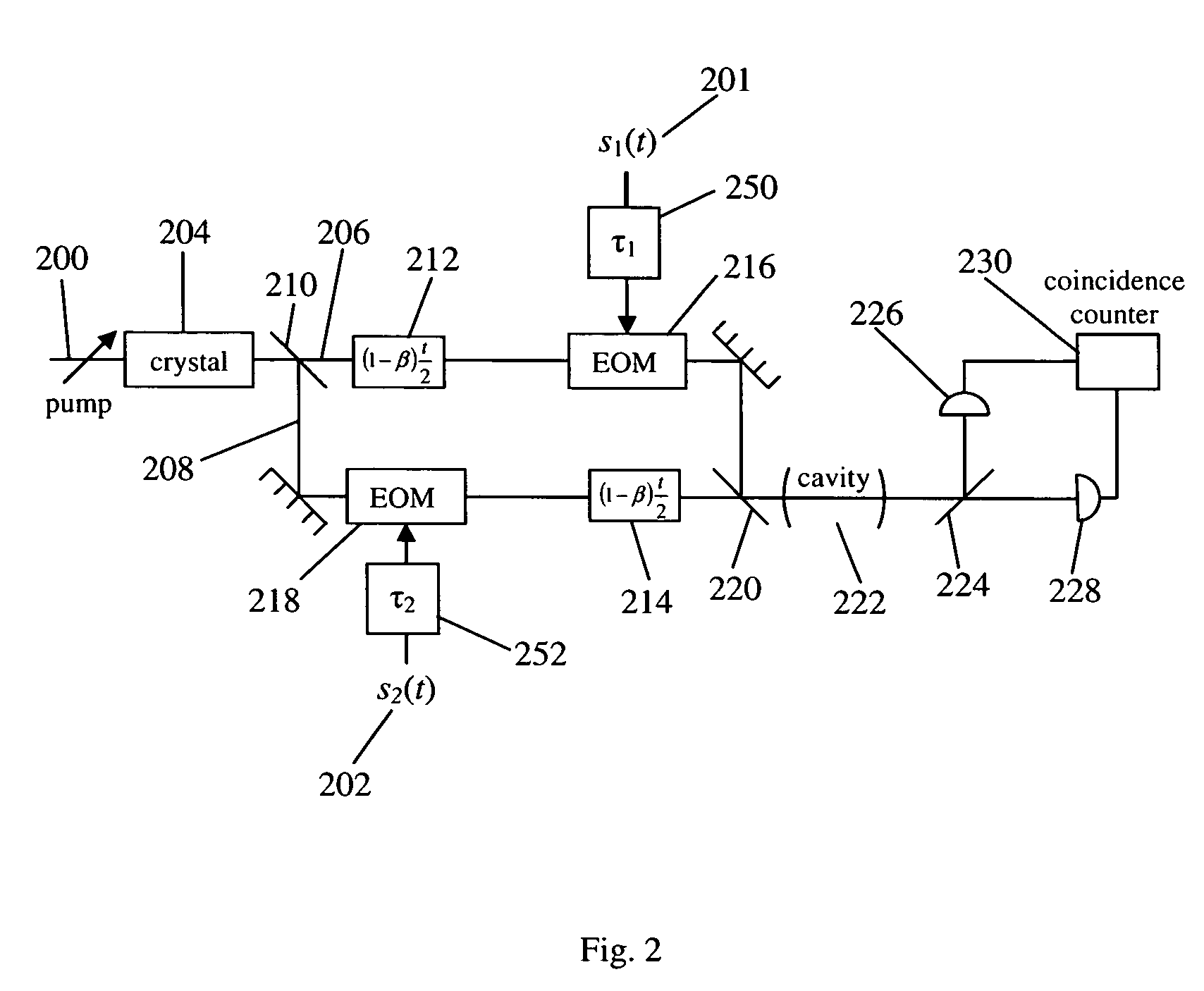Quantum cross-ambiguity function generator
a function generator and cross-ambiguity technology, applied in the field of calculating the cross-ambiguity function, can solve the problems of acousto-optical techniques, high computational intensity of caf, and relatively slow and expensive standard analog or digital systems
- Summary
- Abstract
- Description
- Claims
- Application Information
AI Technical Summary
Benefits of technology
Problems solved by technology
Method used
Image
Examples
Embodiment Construction
[0029]FIG. 1 is a schematic diagram depicting the use of the CAF to geolocate signal emitters 102, 104, 106. Two sensors 110, 112 at different locations and moving at different velocities are used to detect emitters 102, 104, 106. Sensors 110, 112 may be antennas, directional or otherwise. The signal from an emitter arrives at different times at sensors 110, 112, depending on their distance from the emitter. The signals arrive Doppler-shifted differently at sensors 110, 112 depending on the relative motion between each sensor and the emitter. The signals (or their representations) from sensors 110, 112 are brought together using techniques known in the art. The CAF is then used to scan CAF plane 120 by testing multiple time difference of arrival (TDOA) and frequency difference of arrival (FDOA) points in CAF plane 120 according to the embodiment of FIG. 1. TDOA and FDOA parameters that produce a locally maximum CAF value (e.g., 130, 132, 134) correspond to a signal emitter. The phys...
PUM
 Login to View More
Login to View More Abstract
Description
Claims
Application Information
 Login to View More
Login to View More - R&D
- Intellectual Property
- Life Sciences
- Materials
- Tech Scout
- Unparalleled Data Quality
- Higher Quality Content
- 60% Fewer Hallucinations
Browse by: Latest US Patents, China's latest patents, Technical Efficacy Thesaurus, Application Domain, Technology Topic, Popular Technical Reports.
© 2025 PatSnap. All rights reserved.Legal|Privacy policy|Modern Slavery Act Transparency Statement|Sitemap|About US| Contact US: help@patsnap.com



